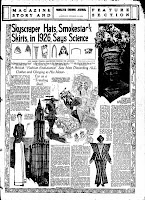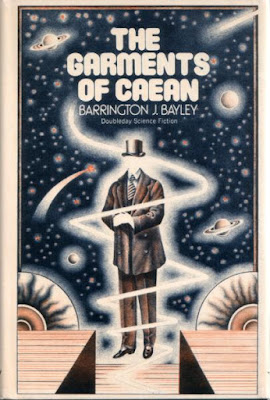People who should not be Architects #2: Philosophers.
Ludwig Wittgenstein was embittered by the difficulties he encountered in implementing his ideas for the Stonborough House,* which left him hostile to the entire profession of structural engineering.
"I am not interested in erecting a building, but in having the foundations of possible buildings transparently in front of me."
This episode comes to mind because Lyle Zapato recently documented similar reflections on the part of the novelist Gerald Heard. perhaps inspired by Wittgenstein's exegesis, although there was a lot of this going round in the 1920s.
![]()
![]()
![]()
In the future there will be EVEN MOAR.
![]()
![]()
![]() Open Mike here is not entirely clear on the concept of "foundations of possible buildings" and is trying to dress himself in reinforced concrete. He has progressed as far as the lattice of rebar but he will come to regret the entire project when the cement truck backs up to him.
Open Mike here is not entirely clear on the concept of "foundations of possible buildings" and is trying to dress himself in reinforced concrete. He has progressed as far as the lattice of rebar but he will come to regret the entire project when the cement truck backs up to him.
* The Stonborough House has been described as 'the most water-piped edifice in the world'. Even in the living-rooms there were upwards of ten rough farmyard taps, some with zinc troughs and some (as those projecting from the ceiling and from converted gas brackets near the fireplace) directed at the unprotected floor. Even the gas pipes were connected up with this water system and would gush strongly at any attempt to provide the light.
Ludwig Wittgenstein was embittered by the difficulties he encountered in implementing his ideas for the Stonborough House,* which left him hostile to the entire profession of structural engineering.
...[Wittgenstein] wrote me an unhappy letter saying, "The men of construction are wicked". I replied, "All men are wicked". He rejoined, "True, but the men of construction are more wicked than the men of any other trade". I retorted that my logical sense rebelled against such a comment, and there the matter rested until occupation elsewhere enlarged his view as to the prevalence of sin.Returning to first principles, he came to the conclusion that no essential element separated buildings from clothes. Both were simply over-specialised derivatives of a common theme, and true health and happiness could only be attained by returning to a more versatile form of body extension.
"I am not interested in erecting a building, but in having the foundations of possible buildings transparently in front of me."
This episode comes to mind because Lyle Zapato recently documented similar reflections on the part of the novelist Gerald Heard. perhaps inspired by Wittgenstein's exegesis, although there was a lot of this going round in the 1920s.

In the future there will be EVEN MOAR.


 Open Mike here is not entirely clear on the concept of "foundations of possible buildings" and is trying to dress himself in reinforced concrete. He has progressed as far as the lattice of rebar but he will come to regret the entire project when the cement truck backs up to him.
Open Mike here is not entirely clear on the concept of "foundations of possible buildings" and is trying to dress himself in reinforced concrete. He has progressed as far as the lattice of rebar but he will come to regret the entire project when the cement truck backs up to him.* The Stonborough House has been described as 'the most water-piped edifice in the world'. Even in the living-rooms there were upwards of ten rough farmyard taps, some with zinc troughs and some (as those projecting from the ceiling and from converted gas brackets near the fireplace) directed at the unprotected floor. Even the gas pipes were connected up with this water system and would gush strongly at any attempt to provide the light.